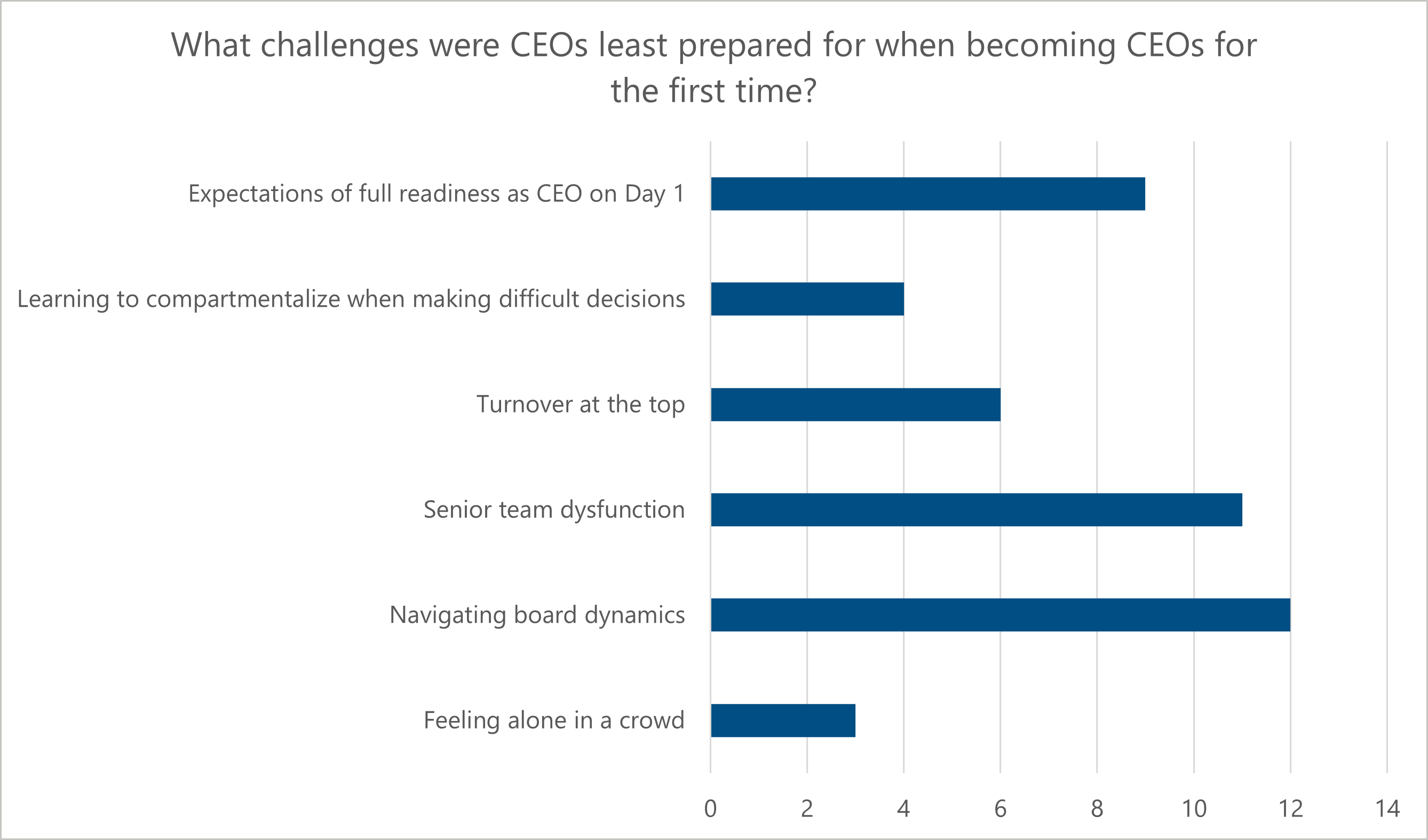
Article | May 2024 | Agenda
Let Them Breathe a Little Bit: Board Dynamics with a New CEO
In a recent webcast with Agenda, Pearl Meyer’s Peter Thies discussed opportunities to improve the CEO onboarding process.
New CEOs say their biggest challenge in stepping into the role is navigating board dynamics, research shows.
They also cited loneliness, the need to be ready on day one, and learning to compartmentalize when making difficult decisions as top challenges, according to a survey from Pearl Meyer of 75 first-time chief executives.
Directors who attended Agenda's webcast on CEO onboarding on Tuesday largely agreed. The largest segment (46%) of respondents to a similar live poll question chose navigating board dynamics when asked what they thought CEOs' biggest challenge was.

In order to help new CEOs get adjusted to the board, directors need to strike a fine balance between getting to know the new CEO and ensuring they're acquainted with their responsibilities, while also giving them some space, panelists who spoke during the webcast said.
It's important that the board ensure the new CEO is not overwhelmed and that it doesn't demand too much too soon.
Along with navigating board dynamics, new CEOs are often surprised about how much time it takes to interface with the board, said Peter Thies, managing director at Pearl Meyer, during the webcast. Therefore, directors should carefully curate onboarding activities.
"In the first 100 days, don't require a whole bunch of dog and pony shows ... because all of that really is quite dizzying for first-timers," Thies said.
Great Expectations
Most CEOs who took the top job in recent years were brand new to the role. Some 88% of CEOs named over the past five years were first-timers, according to Russell Reynolds' global CEO turnover index.
Because of this, it's important not to overwhelm the CEO at the beginning, even though the board likely wants to jump into strategic plans right away, the panelists said.
"It's really important to let them breathe a little bit," Thies said. For a first-timer, the CEO job is "not something you pick up in three months and you're ready to go."
Although there will be a learning curve, directors should make an effort to build trusting relationships with the new leader as they take on required responsibilities, panelists said.
"As much time as you can get in during the selection process, be that internal or external, to get to know that person ... that is the time to be able to have, if possible, one-on-ones, to fly to dinner, whatever it may be, to start that relationship," said Edna Morris, board chair at Tractor Supply Company, during the webcast. "The excellent CEOs that I've worked with design it into their first few months. This demonstrates ... a wanting to work with the board."
Similarly, Thies said, the more board members can have "real life" interactions with the new CEO beyond board meetings, the better.
Defining Priorities
Beyond finding the balance between getting to know the new CEO and giving them some space to get adjusted, the board should be "deeply engaged" in the onboarding process, especially in emergency succession situations, said Deborah Ellinger, senior advisor at Boston Consulting Group and a seasoned board director and former CEO, during the webcast.
She said boards should assign individual directors to specific onboarding tasks with the new CEO and even consider establishing an onboarding committee.
"Is it the lead director doing it or other board members who've got particular expertise who are going to be involved?" Ellinger said. "It's amazing how often that's not discussed up front."
The nom-gov committee in particular will be a key part of onboarding generally, but boards should also clearly denote individual onboarding responsibilities in writing, Morris said.
Thies recommended naming specific board members as CEO coaches, especially directors who have served as CEOs themselves.
"They're not going to be their friends, but they can provide some value," Thies said.
Board Dynamics
Meanwhile, the board can help with setting short- and long-term goals for the new CEO by laying a foundation to determine what success looks like after six or 12 months, Morris said.
"It's very important for the board to agree with the CEO on what's coming now, what's next and what's not coming at all," Ellinger said. "Sorting those things into buckets early on is really important."
A key challenge for any CEO is learning to work with board members who could have differing opinions, the panelists said.
"Part of the job here is trying to figure out where everybody's head is," Ellinger said. "If [different board members] are looking at things differently — and sometimes they are banging their heads together — finding a way to get alignment is important.
"It's really hard when you've got two very powerful board member groups who have different views on where you should go."
Copyright 2024, Money-Media Inc. All rights reserved. Redistributed with permission. Unauthorized copying or redistribution prohibited by law.
